Many types of resume formats exist, each of them has its pros and cons. For example, the chronological resume, also known as the reverse-chronological format, lists all of your professional experiences, starting with the most recent.
This is a classic choice for job applicants with a consistent work history and growth. However, a functional or combination resume format may be more appropriate for anyone with major time gaps or for those who have frequently changed industries.
The format is a great way to help improve your chances of getting an interview. It’s the most commonly used and ideal for most candidates. According to surveys, 75% of hiring managers prefer the resume layout because it is easy to check if a candidate has the necessary relevant experience.
What is a Chronological Resume?
It is a type of document that lists your work history and experiences, starting with the most recent events and moving backward. It is a logical way to present your qualifications to employers and highlight your most recent and noteworthy experience.
Chronological Resume Template
They follow a similar style and format, with some areas left for customization. So rather than starting from scratch, it may be helpful to use a template to jumpstart your job search.
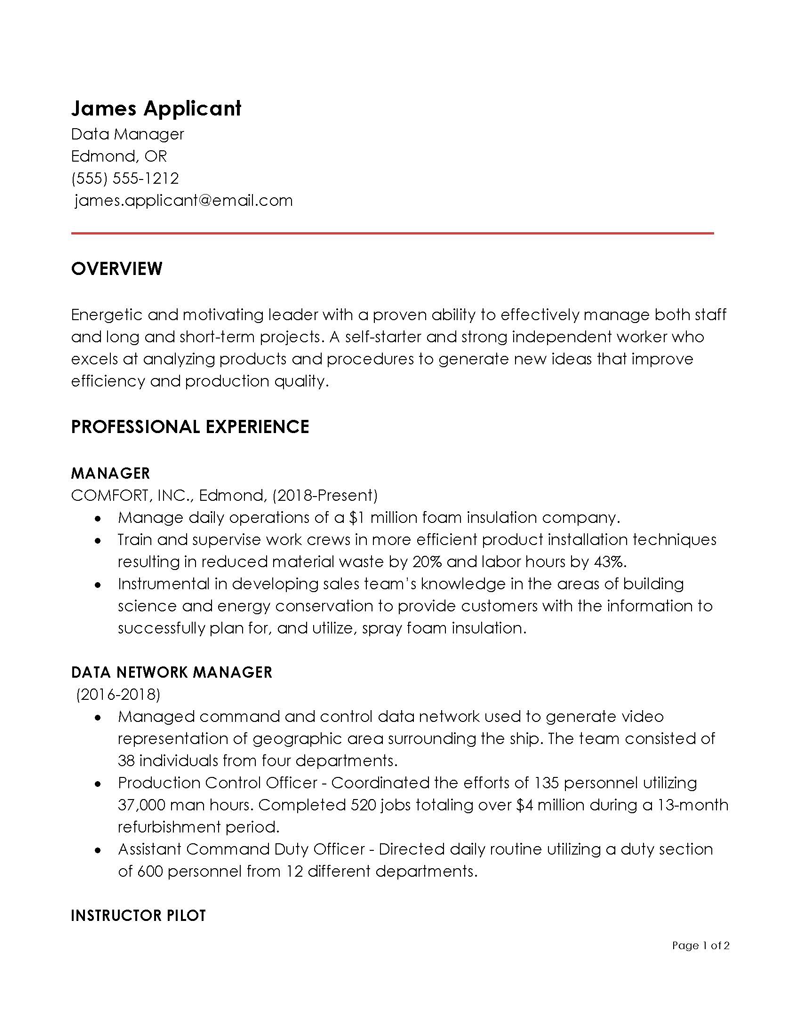
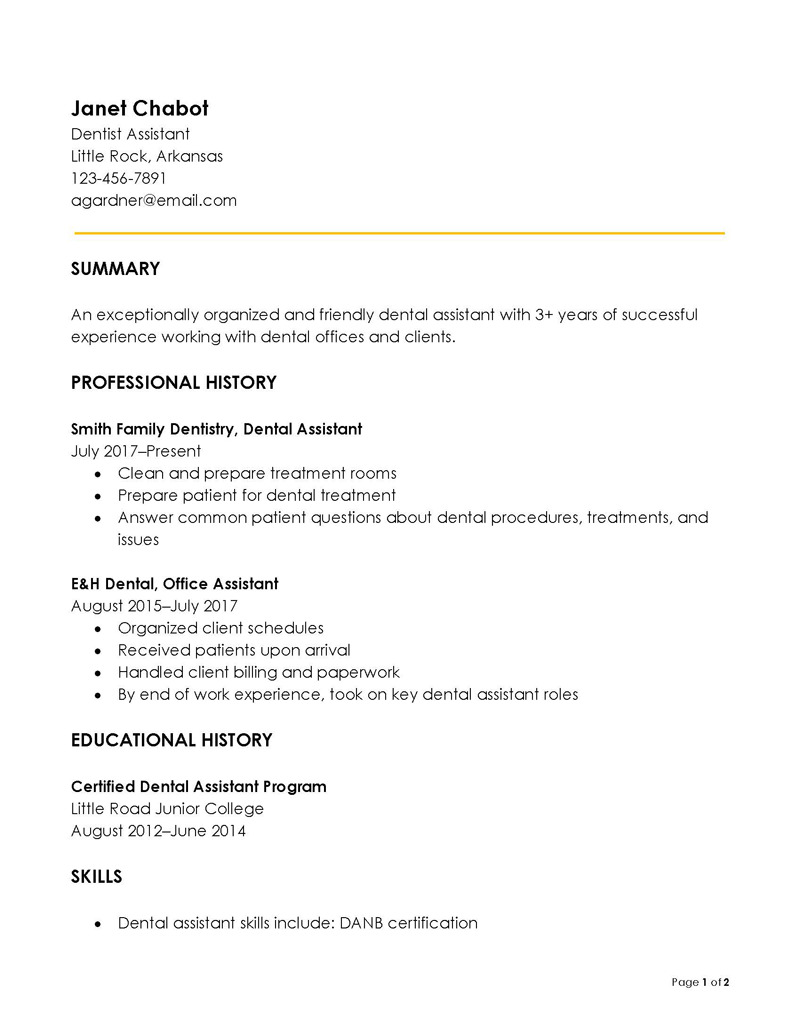
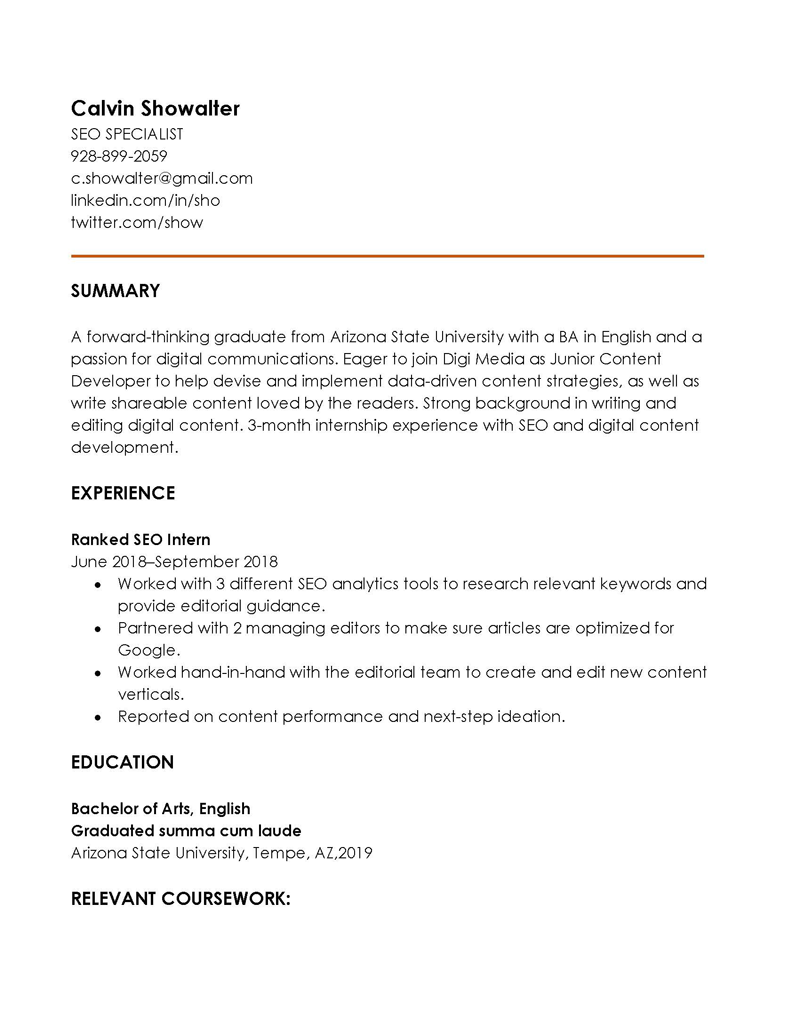
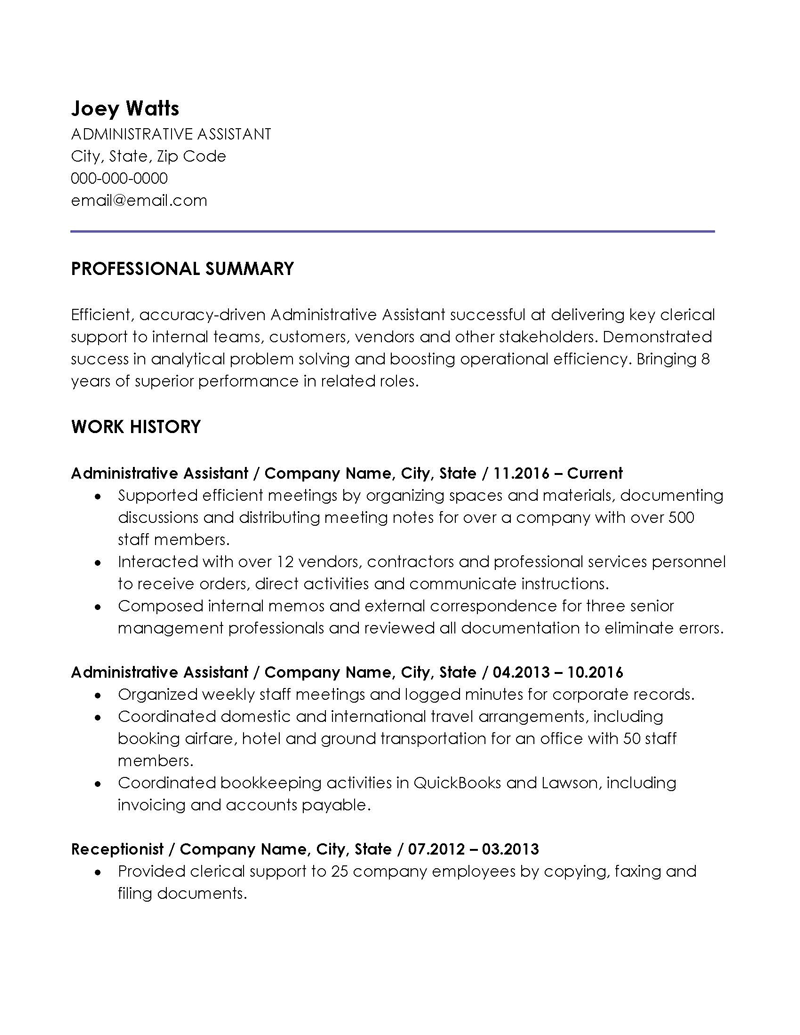
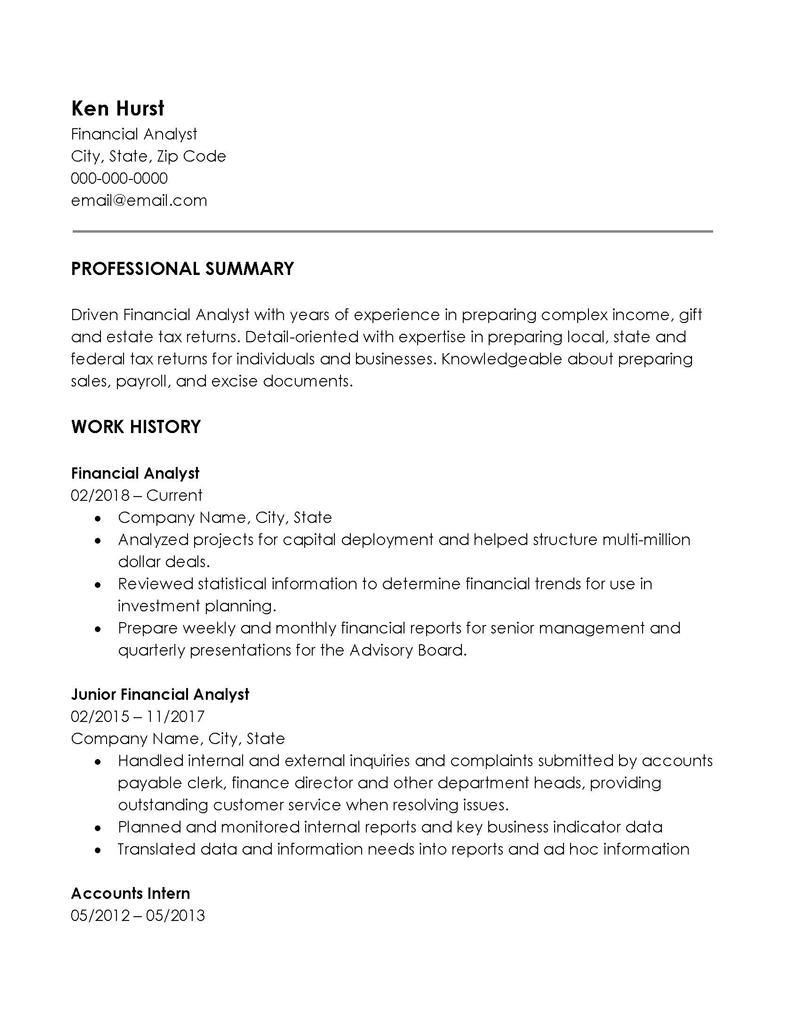
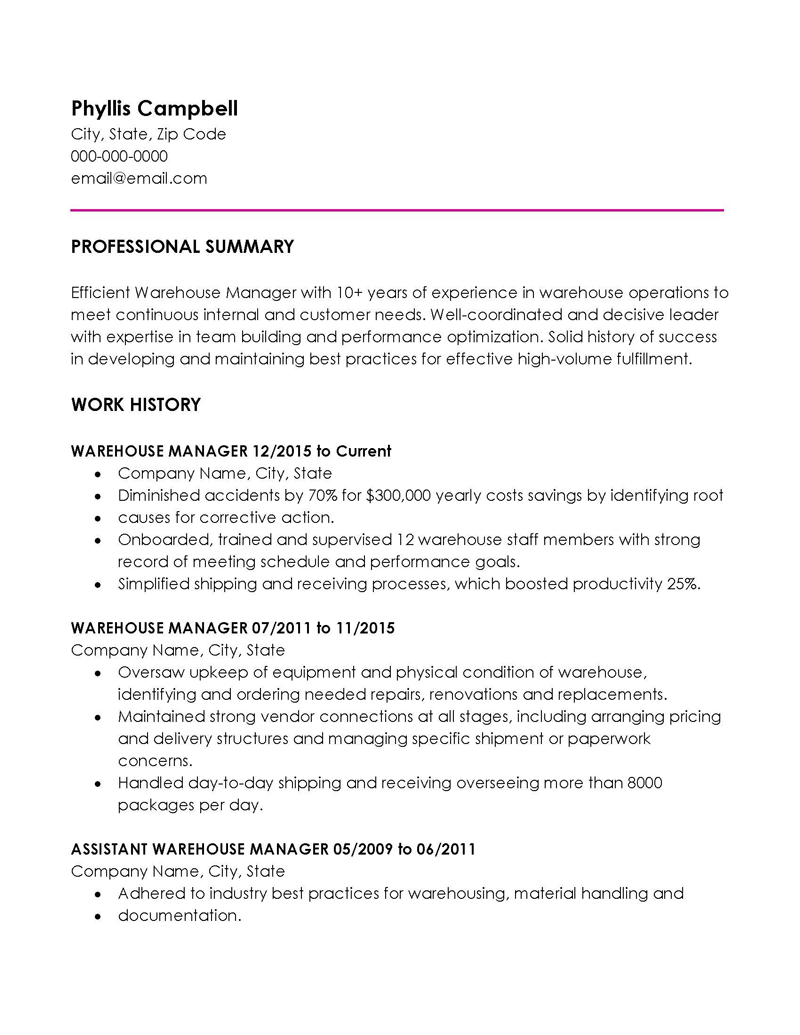
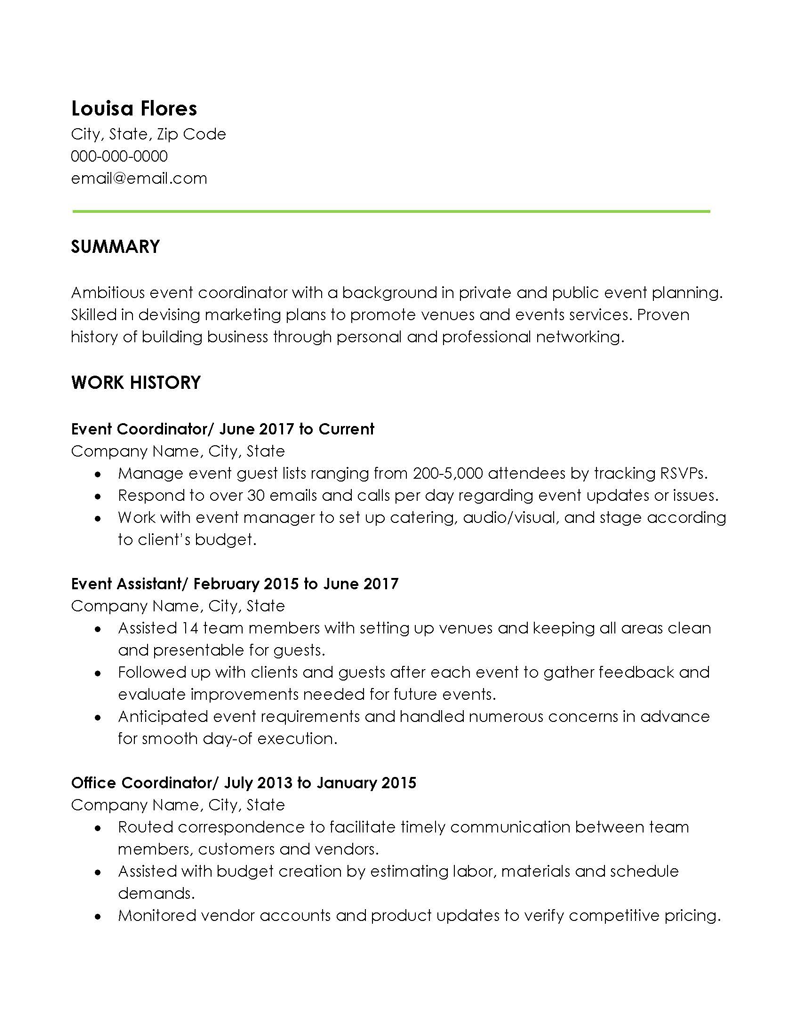
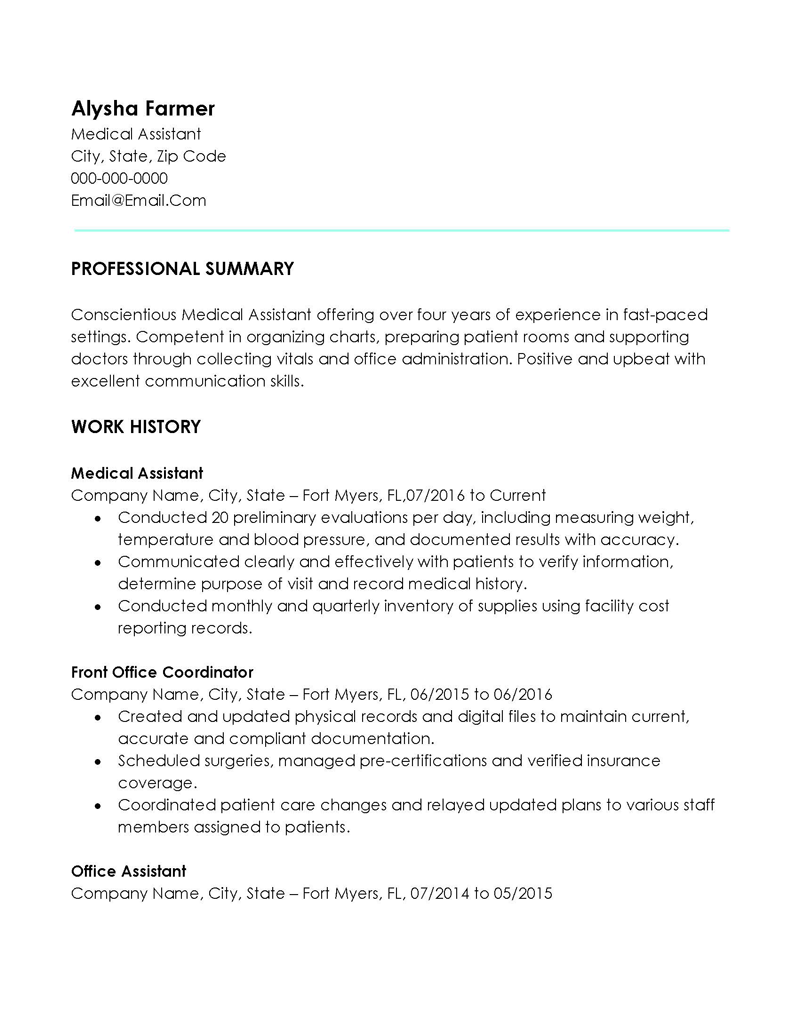
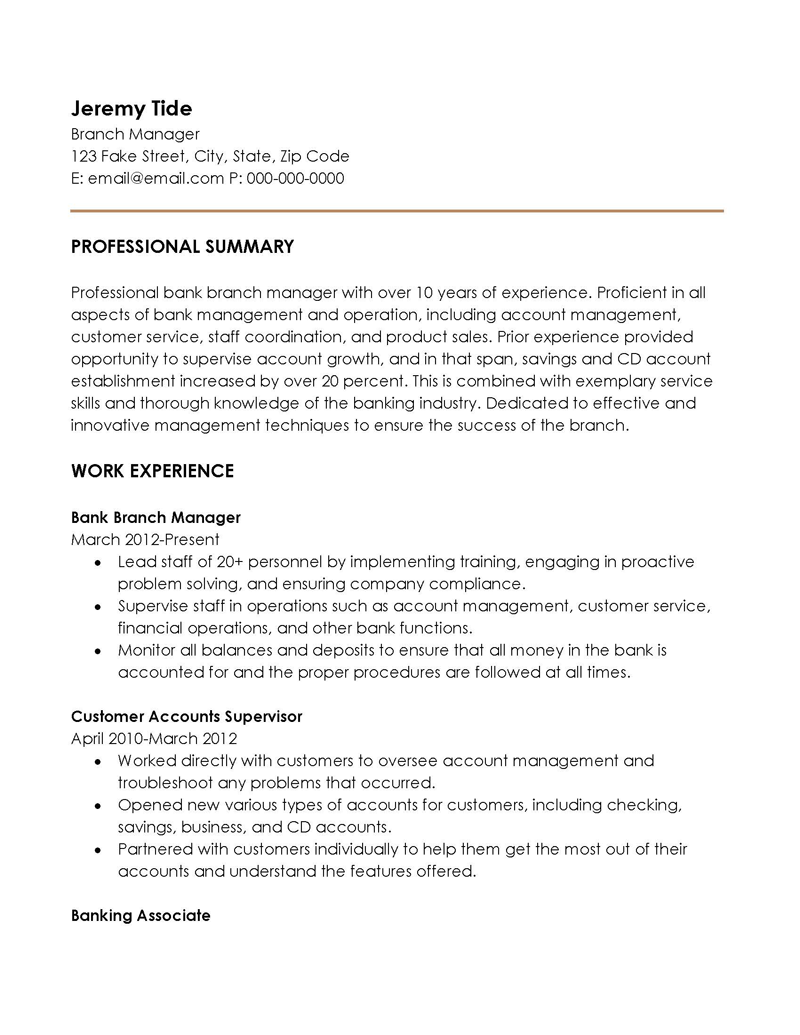
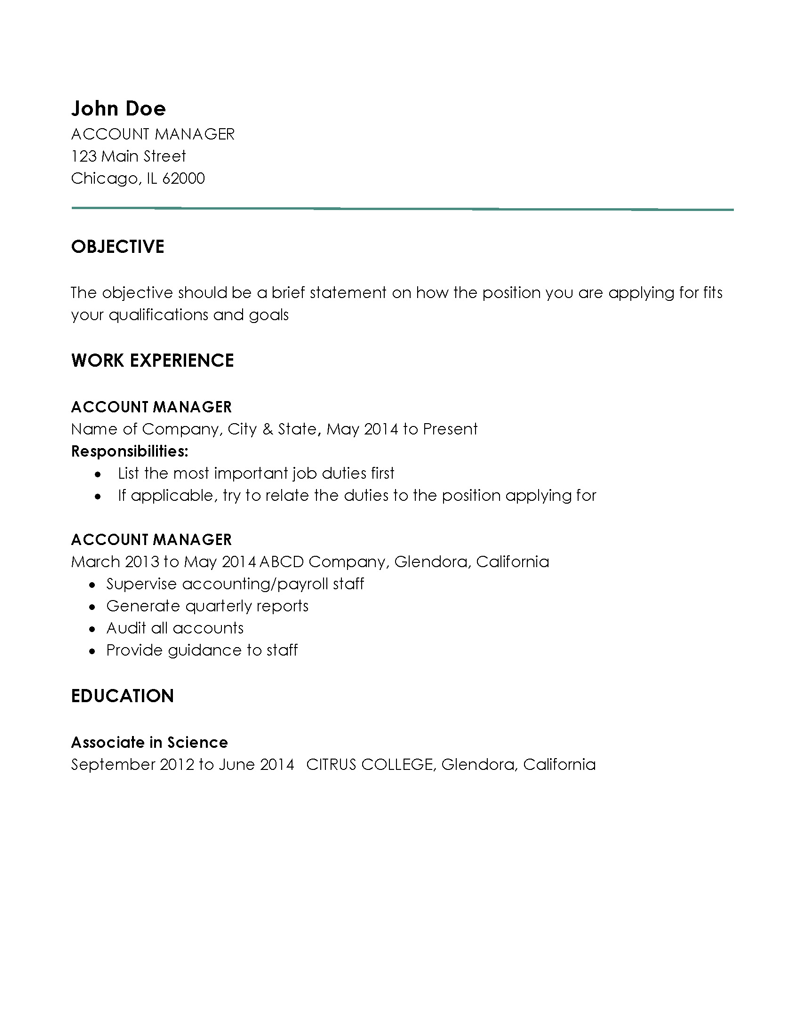
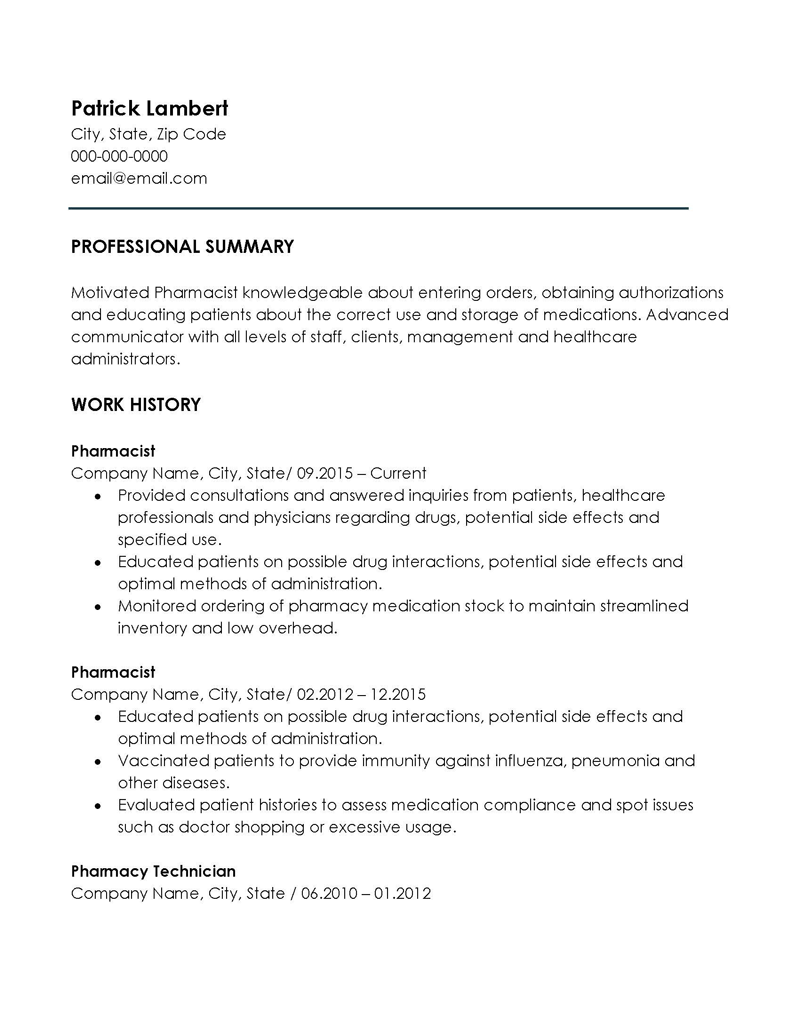
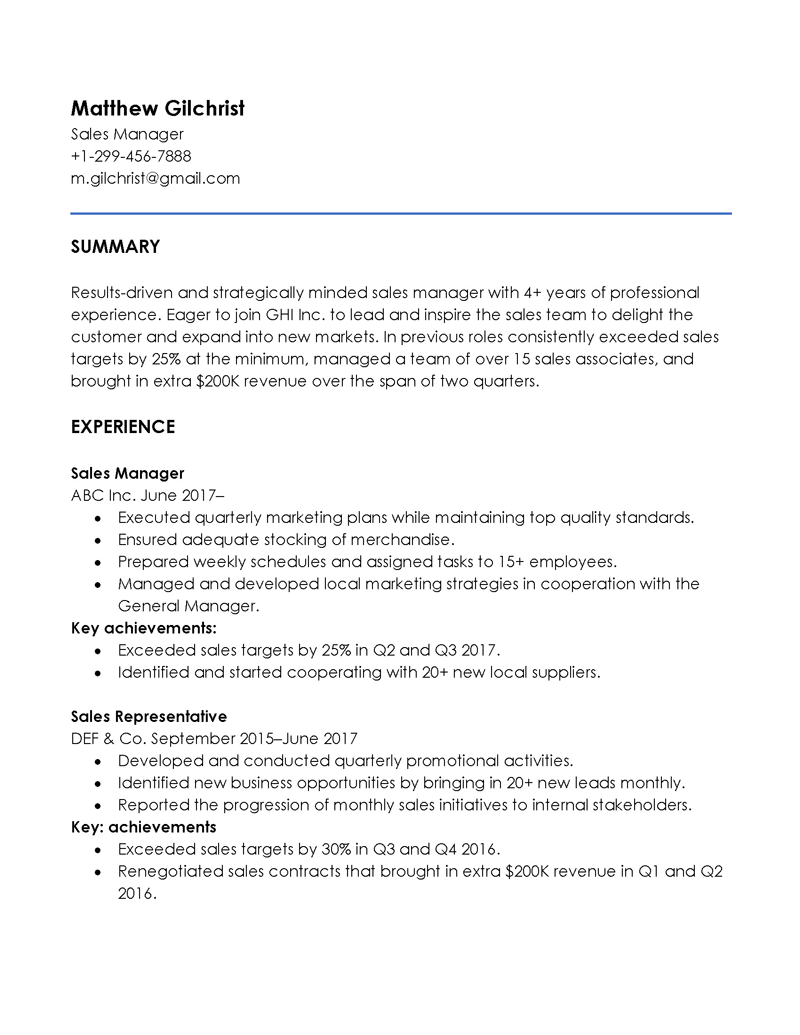
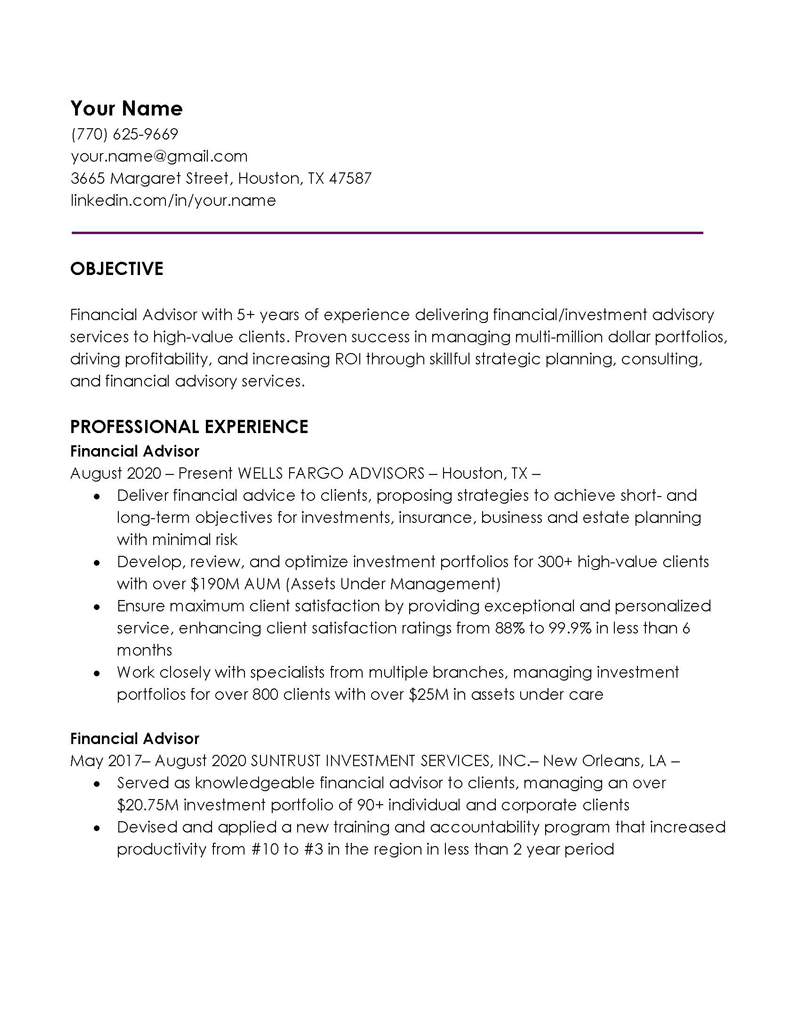
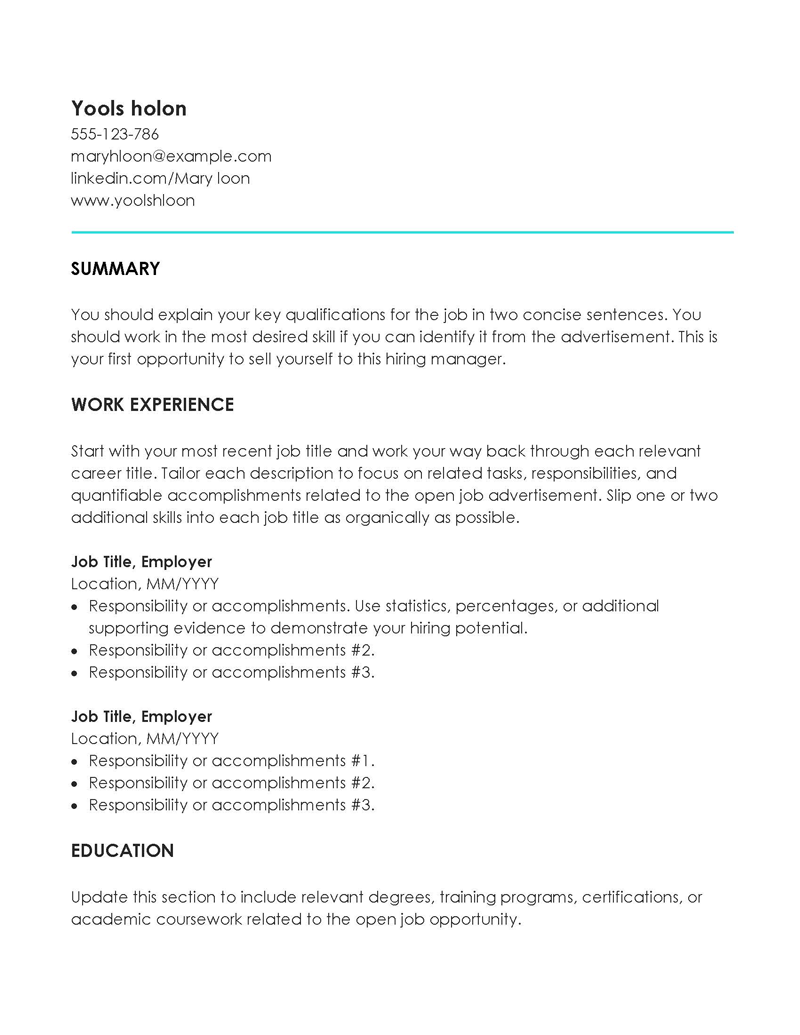
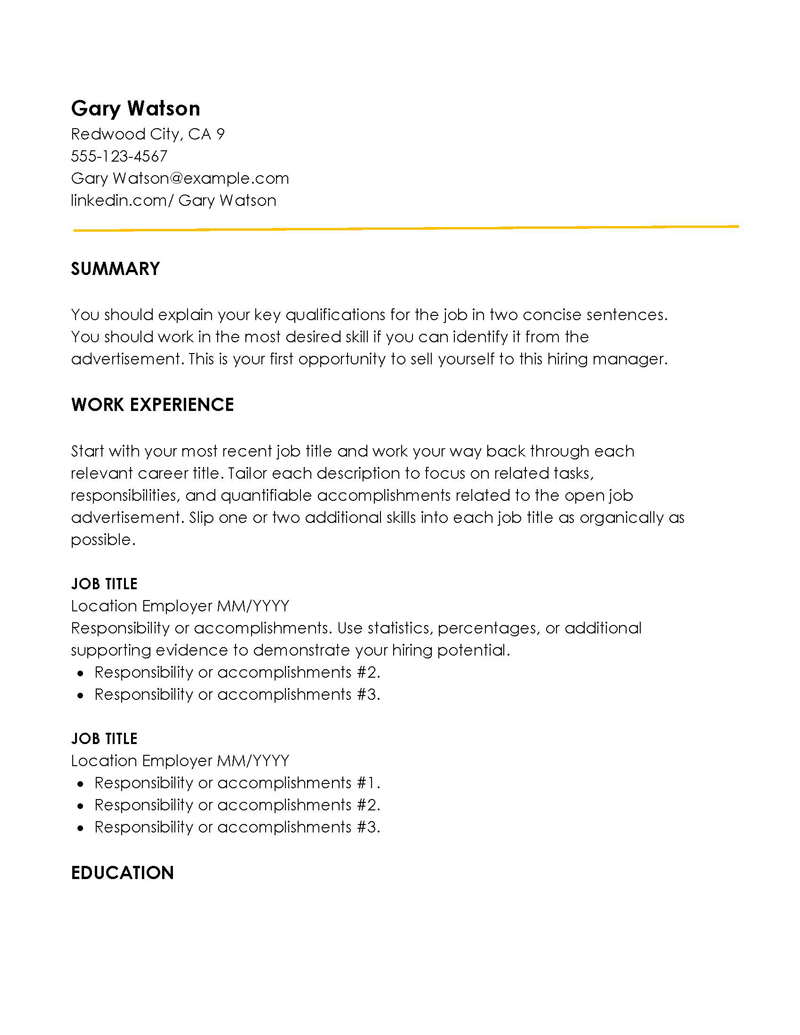
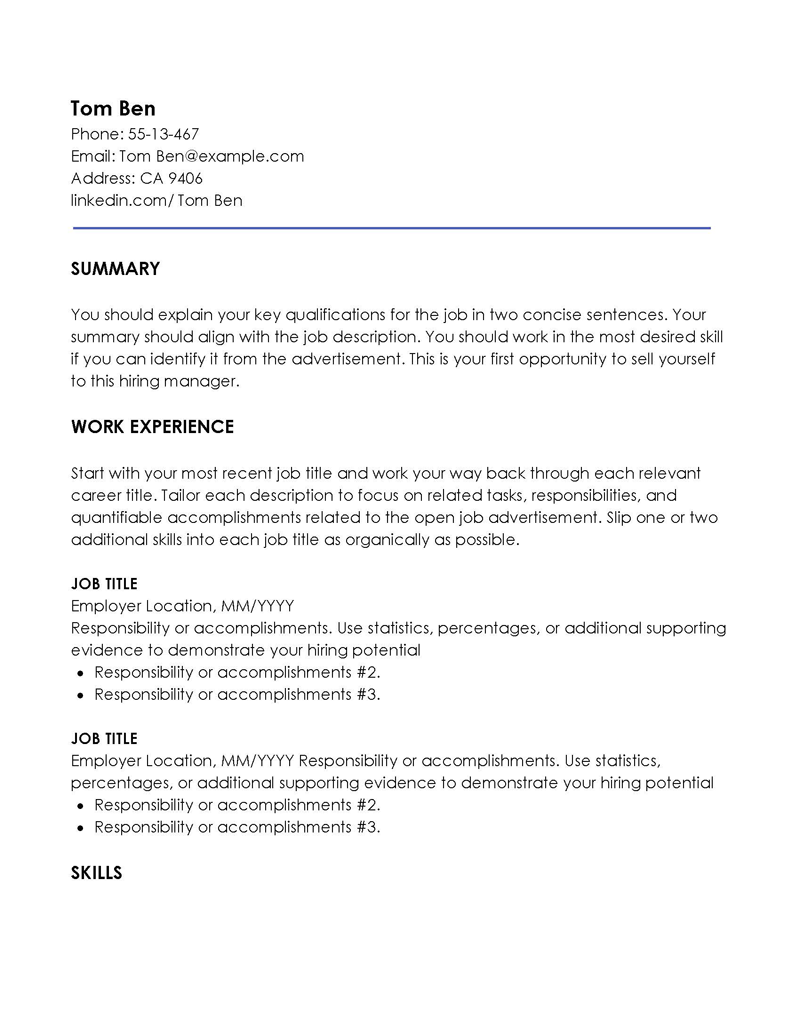
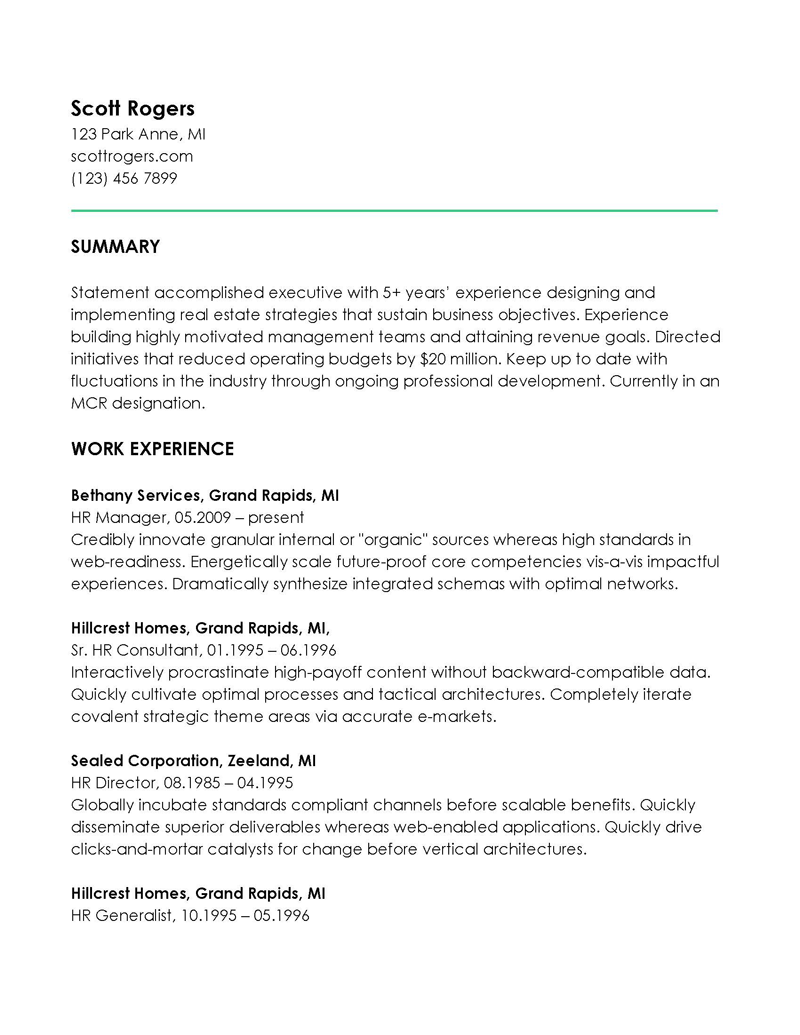
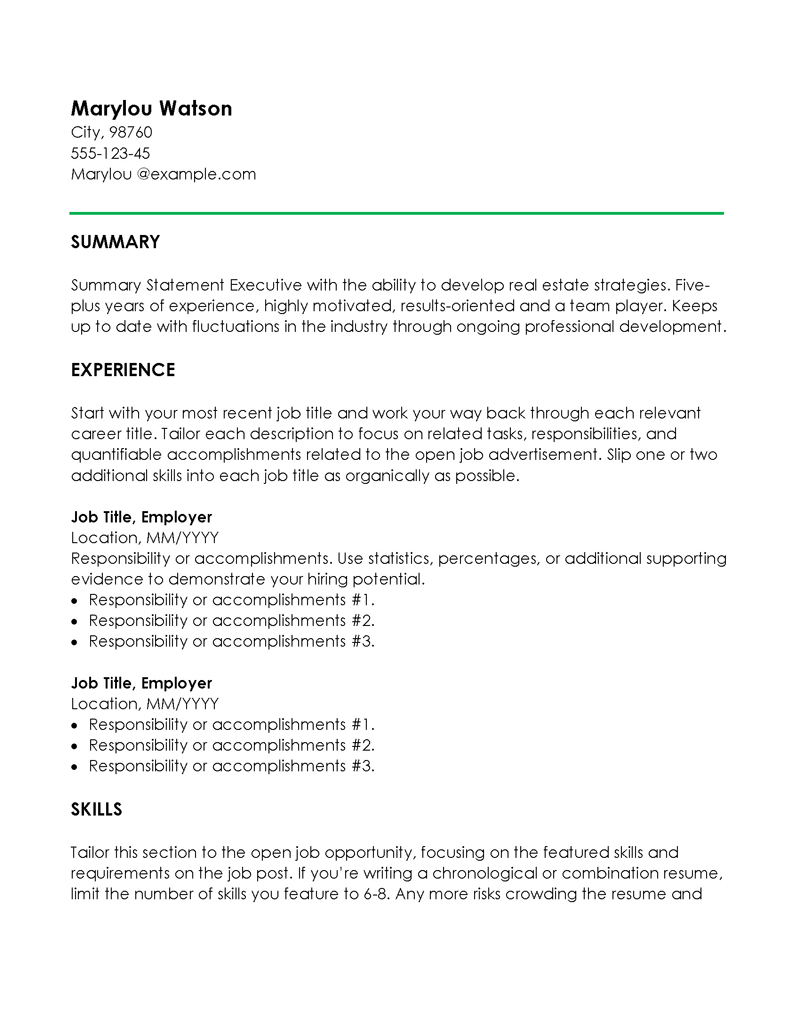
When and When Not a Chronological Resume Layout Required?
It is often an excellent choice for a candidate, but it might not always be the ideal choice. You should consider using this format if:
- You have a steady employment record with minimal gaps between jobs
- You have many years of experience in a single career or industry
- You’ve worked for multiple employers in the same industry
- The skills you have to align with the job description
- You have steadily advanced within your field over the years
However, it might be better for you to choose an alternative resume format if:
- You don’t have any job experience, or you’re currently a student
- You have significant gaps in your resume
- Your skills don’t directly align with the job description
Who and Why Should Use a Chronological Order Resume?
The chronological style for resumes is the most frequently used format, meaning that it’s also the one that recruiters and employers are most familiar with. So in that way, it’s a format your employer is comfortable looking at, but that doesn’t mean it’s appropriate for all job searchers.
The resumes focus on work history, so it’s most effective for those with extensive work experience and skills relevant to the desired role. This is a suitable format for you if you have at least 10 years of formal work experience.
You should also use the chronological order resume if you have no gaps between jobs and have maintained continuous employment. Likewise, if you’ve stayed at each of those jobs for at least a year, then the format is an appropriate choice.
Finally, the chronological format is an excellent way to demonstrate growth within your industry by showing increased responsibility or other promotions. Therefore it is most appropriate for candidates that meet these characteristics.
Chronological Resume Vs. Other Formats
Three main types of resume formats are frequently used. These three styles are called chronological, functional, and combination. Each can be differentiated in demonstrating professionalism, skills, and overall career experience.
For this reason, it’s best to choose the appropriate format based on the applicant’s characteristics.
Chronological resume
- Displays work experience in reverse chronological order
- Great for those who are professionals in their field with plenty of experience
- Ideal for applicants who have fewer skills than years of experience
- Use when you have at least ten years of experience
- Best for people with few gaps but has lots of skills and experience
Functional resume
- Displays skills and goals rather than experience
- Ideal for recent graduates or those who are still studying
- Best for those with more skills than experience
- Suitable for those with little to no experience in the industry
- Good for those with some work gaps or less than ten years of experience
Combination
- Displays both skills and experience in equal distribution
- Great for anyone looking to change careers or career direction
- Best for those with equal amounts of skills and experience
- Great way to hide small work gaps and highlight skills instead
- It may not be ideal for significant work gaps
Pros and Cons
There are several pros and cons to using a chronological order resume. As no singular layout is perfect for all candidates, a job applicant will need to consider the pros and cons and make an informed decision based on their circumstances.
Pros
- Quickly demonstrates position titles and lengths of time
- Recruiters and employers are very familiar and, in most cases, may even prefer it
- It may give job hunters an advantage when applying to large companies
- The resumes are prioritized when applying for senior positions
- Easy to read in the applicant tracking system
- Employers can skim it quickly and effectively
- Brings focus to job titles
- Allows you to include information about skills and achievements
- Appropriately displays career progress and growth
Cons
- Work gaps become obvious
- Not the best idea for newcomers or for people switching careers, as it focuses on industry advancement
- Not ideal for students or young people who lack experience
- Your skills and education become secondary to work experience
- Many changes in work history may stand out negatively to some employers
- It can be challenging to stand out since almost all applicants will use this format
How to Format a Resume in a Chronological Order
Any chronological resume should include information specific to the job you’re applying to, both in terms of achievements and experience throughout the resume. It’s recommended to include some of this specific information toward the end of the resume, always trying to keep it as concise as possible.
In a layout, you’ll structure the experience section first by listing your work history, starting with the most recent. When doing so, it’s also recommended to ensure the job descriptions contain the keywords that employers use, mainly if they use an applicant tracking system. It’s also an excellent way to understand how you should describe your own experiences.
Students may choose to place their education section before their work history, especially if they have more education and certification than experience in the industry. However, once you’ve been in the industry for several years, it’s likely better to include this information after your work experience.
Keep all of this in mind, as you may need to personalize your resume in the following sections:
Section 1: Contact information
The header on the resume should include all of the applicant’s information, making it easy for the reader to understand who is applying and reach out to them if needed. The header should include the applicant’s full name, email address, phone number, and any online portfolio such as a LinkedIn profile.
Section 2: Summary statement/objective
The second section should be located directly under the contact information and is a great way to grab your future employer’s attention. Many candidates will choose between a resume objective or a summary.
You’ll briefly list some of your most noteworthy qualifications for a resume objective statement and concisely tell the hiring manager that you’re ready to adapt to a new position. This is a great way to show the reader that you’re a passionate and dedicated individual in the industry.
A resume summary is slightly different and focuses more on the career highlights, making this an excellent choice for those with more than ten years of experience in the industry. Then, in a short paragraph, you’ll list your most relevant qualifications, skills, and achievements.
Section 3: Work history
The third section is the primary component of the resume. Here, you’ll list your job history, writing the official title at the start of each subsection.
Underneath each position, you’ll add just three to five bullet points that use action verbs to outline the primary responsibilities and experiences. In addition, you may choose to use specific numbers and measurable accomplishments to give employers a better understanding of your time at your previous companies.
It’s always recommendable to use action verbs that make the resume a more engaging read. This shows the hiring manager that you’re a proactive individual who understands how to make achievements in the workplace.
Section 4: Skills and abilities
After listing your work experience and history, it’s essential to add a skills section. You’ll want to pick skills relevant to the specific job you’re applying for, whether those be hard or soft skills.
This is an excellent way to exhibit skills you couldn’t demonstrate within the work history section. For example, suppose you’re unsure which skills to add to this section. In that case, it’s recommended to look at the job listing and see if any skills are specifically written under the responsibilities section.
Section 5: Education
A very brief education section is also recommended in the resume for most career paths. It should only include basic information, such as the university name, location, degree, and graduation date. This is sufficient for most applicants, as hiring managers may be more interested in work experience than education.
However, students or recent graduates may choose to add more information here to help them stand out. For example, adding exceptional GPAs, relevant coursework, and even extracurricular activities or awards may be helpful. As you may not have extensive work experience, this is another way to make yourself stand out from the crowd and demonstrate your work ethic.
Section 6: Custom sections
Depending on your experience and industry, you may choose to add additional sections that highlight the relevant information. For example, if you have any noteworthy awards, certifications, or volunteer experiences, those should be listed at the end.
This last section accommodates anyone with only a few years of work experience, allowing them to fill the page and make sure you’re using all the space available to describe yourself.
Tips
Your potential hiring manager is likely to read many different resumes daily, so it is vital to make sure you’re using professional practices to stand out from the crowd. Here are a few best practices you can follow to help improve your chances of earning a job interview:
Resume should be two pages max
Two pages are more than enough to list all of your relevant experiences. Most studies show that hiring managers only have six minutes to read your resume, so one page is almost always the recommended length. However, if you’re applying for an upper-management position, you may choose to have two pages highlighting your numerous past successes and experiences.
Accompany a cover letter with the resume
Cover letters are an excellent way to demonstrate your interest in the position and show how you can bring value to the company. It’s a very personable way to introduce yourself and includes any pieces of relevant information that the resume might not be able to display correctly. In addition, a properly written cover letter is the best way to grab the manager’s attention immediately.
tip
Only list 10 to 15 years of work history
Most research shows that listing only the last ten years of experience is most effective. More than 15 years of experience is unlikely to be relevant and wastes precious space on your resume. However, if you believe that it’s essential to show more than 15 years of experience, consider using a combination resume that can present a more dynamic story.
Frequently Asked Question
It should go back to the first job relevant to your current position. As you’re using this resume to highlight your skills and experience in this specific industry, you don’t need to add irrelevant experience that doesn’t add anything. For example, when applying for a marketing position, you don’t need to add your high school experience as a busboy.
Yes, just like the chronological resume, a CV is also typically organized by time. So you’ll start with your most recent experience and work backward towards your first relevant role.
Most of the time, recent college graduates benefit from using a functional resume. However, as freshers will not likely have extensive work experience, they can show their work ethic by highlighting their skills.
In this type of resume, the work experience is always listed in chronological order, as this is the most logical way to organize career growth and progression. However, if there are several time gaps in your work history, different types of resumes may prove to be more effective.
This depends on both the industry and the type of position you’re listing. Many experts believe an employee should stay with a company for at least two years before moving on to a different path.
However, it is still okay to list these jobs in your resume. You should be prepared to talk about the reason for leaving during the interview or potentially address these concerns in the cover letter. If you’ve had numerous short-term job positions, creating a functional resume rather than a chronological one may be more beneficial.




